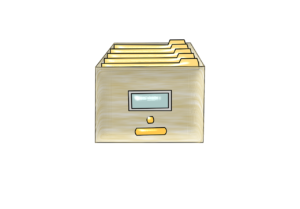 Find past episodes of the show below and be sure to subscribe on iTunes so you never miss an episode.
Find past episodes of the show below and be sure to subscribe on iTunes so you never miss an episode.
Break Out of Negative Behaviors
 They may be talking about not getting stuff done, procrastinating until the last minute, showing up to work late every day, not doing their fair share in a relationship, talking too much at social events and on and on. The frustration comes from not being able to disrupt the pattern or being able to disrupt the pattern only temporarily and then sliding back to their old ways.
I know how tough this is, I experience it myself and it is not only frustrating but disheartening also. One cannot help but ask oneself “Will it always be this way?” “Am I stuck with this behavior?”
Honestly, I don’t know. I have been successful with some disruptions working and some other things not working as well. But there are two simple things you can start doing on your own to try and get unstuck from a repeating behavior or loop.
First, practice inserting a pause before any action. Just a second or two pausing allows the thinking part of the brain to take over from the emotional part of the brain. This may give you the opportunity to question what are you doing, has this worked in the past, is there something else you could do?
Second, start slowing down your processes and really trying to observe every step. Question at every step if there is a flaw in the process and a way to try differently the next time.
Since you are now pausing before every action if you see new opportunities of disruptions you can implement them and see if they work.
This is all about awareness and experimentation. It is not a quick fix but a reflective process in and of itself. So rather than try it in every area of your life at once, pick one thing that you feel stuck in and try this out.
“It is good to have an end to journey toward; but it is the journey that matters, in the end.” ― Ernest Hemingway
They may be talking about not getting stuff done, procrastinating until the last minute, showing up to work late every day, not doing their fair share in a relationship, talking too much at social events and on and on. The frustration comes from not being able to disrupt the pattern or being able to disrupt the pattern only temporarily and then sliding back to their old ways.
I know how tough this is, I experience it myself and it is not only frustrating but disheartening also. One cannot help but ask oneself “Will it always be this way?” “Am I stuck with this behavior?”
Honestly, I don’t know. I have been successful with some disruptions working and some other things not working as well. But there are two simple things you can start doing on your own to try and get unstuck from a repeating behavior or loop.
First, practice inserting a pause before any action. Just a second or two pausing allows the thinking part of the brain to take over from the emotional part of the brain. This may give you the opportunity to question what are you doing, has this worked in the past, is there something else you could do?
Second, start slowing down your processes and really trying to observe every step. Question at every step if there is a flaw in the process and a way to try differently the next time.
Since you are now pausing before every action if you see new opportunities of disruptions you can implement them and see if they work.
This is all about awareness and experimentation. It is not a quick fix but a reflective process in and of itself. So rather than try it in every area of your life at once, pick one thing that you feel stuck in and try this out.
“It is good to have an end to journey toward; but it is the journey that matters, in the end.” ― Ernest HemingwayCreating a Daily Plan and Putting it in Your Calendar
Start the night before planning in your mind at least if not on paper (or an app you like to use) what you want to achieve the next day. Think in terms of how long each of the tasks you are interested in achieving takes in REAL time – not fantasy time.
 Either the night before or that day of put all the fixed activities into the calendar if you have not already done this. Fixed activities are activities that are scheduled in advance involving other people.
Either the night before or that day of put all the fixed activities into the calendar if you have not already done this. Fixed activities are activities that are scheduled in advance involving other people.
Before you put in your tasks to get done, be sure to check what the deadlines are for each task so that you can make informed decisions as to which tasks to do first. This not only includes the deadline of the task but also the importance of the task and how much time you will need to allocate to get it done.
That is right, not how much time it will take you to get it done but how much time you will allocate to get it done. That is an important distinction. You can spend forever working on a task to get it done to your satisfaction but that isn’t your job. It is to get the task done and spend a reasonable time on it based on the determined value of the task in the greater scheme of things. (This will be the topic another essay.)
Before scheduling tasks onto your calendar first decide if the task actually needs to be done and if so, can it possibly be delegated to someone else. If not the whole task, maybe parts of the tasks could be delegated. Always be trying to eliminate items from your calendar when you can.
Be sure to have some margins around each activity just in case something goes longer than expected. A margin is a buffer zone between things. Just like a piece of paper has margins on both sides for the occasional overflow of letters or words, you need margins in your schedule for the occasional time overflows.
Schedule your tasks in chunks if possible. Chunks of time are time blocks that are no longer than two hours in which you do related tasks. During these chunks you focus in on whatever the activity is rather than doing a little bit of everything. This helps to get you into a “zone” or “flow” which makes it easier to keep working. Take breaks within the time chunk. Examples of time chunks: writing materials for a marketing campaign, sales calls, planning strategy, returning emails, etc.
Unless something truly catastrophic happens, stick with your daily plan. The more you do that, the easier it gets to do both the planning and the executing of the plan. If you “fall off the wagon” simply get back on the next day. If you find your plans don’t seem to work go back over the directions and see where you might be miscalculating. – Time allocation? Realistic chunking? Good Margins?
“If you don’t know where you are going, you’ll end up someplace else.” – Yogi Berra
Attitude and Being at Choice
I often say to clients “you’re at choice” and they go “what does at choice mean?” It means that every moment of your life you are making choices. They can be “yes” “no” choices that are simple or subtle choices as to how your expression configures itself from moment to moment while listening to someone else speak. It holds true to with attitude also. At every moment, as that moment confronts you are at choice as to how you respond and most important, what your inner attitude is in that moment toward yourself and toward others you are interacting with.
Sometimes people make great choices. They face every situation, no matter how dire with a can do attitude. It doesn’t mean they don’t fully understand when they are in a fix but they choose an attitude of positivity rather than negativity. In my mind that is a good choice because negativity will get you nowhere and positivity may get you somewhere.
There are others who do what I call luxuriate in negative attitudes. I think there are many reasons they do this. I should know I used to be one of those people. Dwelling in negativity means – it won’t work, so why try. It lets you off the hook, you can abdicate responsibility and become a “watcher” rather than a “doer.”
I believe that a positive attitude can get you through some tough stuff if you choose it to. But positive attitudes take engagement and that involves energy that can be hard to muster in difficult times especially when you feel downtrodden. The wonderful thing is that if you can get yourself moving toward a positive attitude the energy will come naturally.
“The last of the human freedoms: to choose one’s attitude in any given set of circumstances, to choose one’s own way.” Viktor Frankl
Are You Obsessed with Office and Organizational Products?
Are You Obsessed with Office and Organizational Products? I know I am. It has gotten better but I used to buy too many office products and organizational tools. I think it is all about hope. If only we could find that truly perfect office supply or organizational product. So perfect that it would solve all of our problems.
 Unfortunately, that is not likely. We often think if we had one more item to aid us our problems with productivity and organization would be solved. Instead we keep accumulating stuff!
Unfortunately, that is not likely. We often think if we had one more item to aid us our problems with productivity and organization would be solved. Instead we keep accumulating stuff!
Aside from the hope a new item might generate, our ability to stay organized and productive is also a way to procrastinate. Time is taken up by finding that “just right” product that will solve our problems. Time we could be using just to get whatever needs to be done – done.
This also applies to non-organizational and office supplies. Have you caught yourself spending time hunting for just the right item to help you solve a problem when you could just activate yourself and do the work to solve the problem without a special tool?
Granted we sometimes need things to accomplish things but we must be careful not to be acquiring things that solve just one problem that you could have solved without it. Next time you think you need to buy something to get started on a task. Stop yourself for a moment to question if this is not simply a way of procrastinating. Try some creative problem solving or motivational exercises and then get to work.
Are You Falling into Any of These Filing Traps?

It was rumored, incorrectly, that the advent of the computer would put an end to paper files. It seems it has only increased the number papers we have around plus now you have to keep track of digital files as well. If you are one those who has gone completely paperless in your office, you can stop reading now.
For the rest of us humans, especially those of us affected by ADHD, filing paper and digital files can be a hassle. Especially if you fall into some of these traps:
Complicated, highly detailed filing system –
The trap here is the system, while it may be elegant, is onerous and therefore you don’t use it. The thinking is you will just file the paper(s) away later when you have time.
Perfectly matching filing system –
The trap here is that if don’t have the right color label or file folder, or however the system is made uniform, you don’t make the file or label putting it off until you have the right matching supplies.
Different systems for your paper and digital files –
The trap here is that the systems are not interchangeable so that you need to remember two systems instead of one. Often this results in inconsistencies because you can’t remember the rules for each set up.
How to stay out of these traps:
Keep your filing systems simple, the more complex, the less likely you will utilize them.
Don’t create color-coded or the like systems unless you always keep a bountiful amount of supplies. If you are out of some filing supply, it is just one more deterrent to getting stuff filed.
Try to have your paper and digital files mirror each other as much as possible that way regardless of paper or digital you know immediately where to look for the file and know immediately how to label newly created files.
For example, I group my paper files under the same categories that I tag my digital files for the most part. There are some files that will only exist digitally and some files that will only exist as paper, ever. But for the most part they are similar so I know where to look on my computer and in my paper files to find something. This is especially helpful if I can’t remember whether the file is paper or digital. I only have to check one area of paper files and one area of digital files. Recently I needed to find my coaching certificates that I have earned to send in for my re-certification. Very quickly I could ascertain which I had digitally and which I had hard copies of. Now I know which to scan and which to attach to my re-cert application.
In conclusion –
The simpler the system the better and have your digital and paper systems mirror each other as much as is reasonable and workable. The key is for it to take little time to find something. Also, as I tell all my ADHD affected clients in regards to paper files, if you have to make the choice as to easier to get or easier to put away, make it easier to put away. The logic is that when you need something you are motivated to get it. But once you no longer need it or are done with it, there is not similar motivation to put it away. Happy filing.
Getting Clear on Due Dates
When your boss gives you a project and says it is important but doesn’t give a due date, you need to ask for one. The boss may respond “As soon as possible.” Of course you are already working on stuff so now you face a dilemma. Do you stop everything and work on the new project? Or do you finish what you are doing and then start on the new project?
This is when cultivating a good relationship with your boss is key because you need to know how to prioritize work when working for that individual.
A good habit to get into is to track questions you have for your boss and wait for a good opportunity to clear up those questions. For example, during an annual evaluation or similar meeting simply say something like:
“When you give me important projects that need to be done as soon as possible but I am working on another project with the same directive how would you like to me to handle that? Should I bring to your attention the other project and have you tell me which is the priority or use my discretion or something else?”
If the boss says to ask, then you have laid the groundwork to ask during those high-pressure moments. Also you refer to the conversation.
“As per your instructions in situations like this, should I drop project X temporarily to do project Y? Or finish project X then do project Y?”
Create a cheat sheet of these types of questions and answers. Then you have a reference point as to what to do when specific situations arise.
Be sure when having these difficult discussions with your boss that you be as succinct as possible with your scenario descriptions. Also be sure to take notes on your boss’ response. We are notorious for forgetting things like this, especially when we are in a stressful situation.
For more tips on helping the boss help you, check out my podcast episode on this subject at https://abigailwurf.com/010-how-to-help-your-boss-help-you/.
